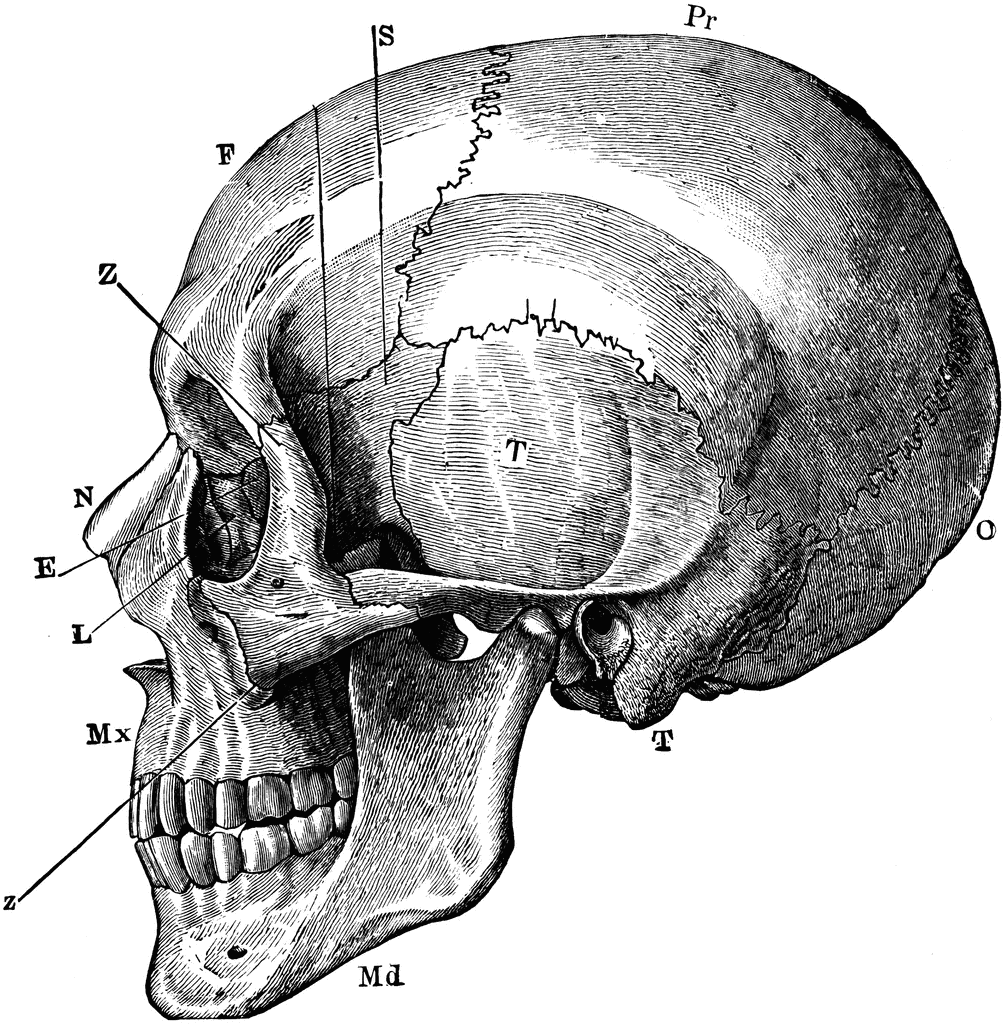
The side view skull, also known as the lateral skull view, is a critical perspective in both medical and educational contexts. Understanding this specific view provides insights into cranial anatomy, potential pathologies, and applications in surgical planning. In this article, we will explore the anatomy of the side view skull, its significance in various fields, and how it can be utilized effectively.
The lateral view of the skull is essential for professionals in fields such as dentistry, anthropology, and medicine. By examining the side view of the skull, practitioners can assess craniofacial growth, diagnose conditions, and even plan surgical interventions. This article aims to provide a comprehensive overview of the side view skull, delving into its anatomy, clinical relevance, and educational importance.
As we navigate through this topic, we will cover various aspects, including the structural components of the skull as seen from the side, common pathologies associated with craniofacial structures, and the technological advancements that enhance our understanding of the side view skull. Let’s embark on this detailed exploration of the side view skull, its implications, and how it plays a vital role in numerous disciplines.
Table of Contents
1. Anatomy of the Side View Skull
The side view skull showcases various anatomical landmarks essential for understanding cranial structures. Here are the key components:
- Frontal Bone: Located at the front of the skull, the frontal bone contributes to the forehead and eye sockets.
- Parietal Bone: This pair of bones forms the upper sides and roof of the skull.
- Temporal Bone: Situated on the sides of the skull, this bone houses the structures of the ear.
- Occipital Bone: Found at the back of the skull, it contains the foramen magnum, where the spinal cord enters.
- Sphenoid Bone: This complex bone forms part of the base of the skull and the eye socket.
- Maxilla and Mandible: These bones form the upper and lower jaws, respectively, and are critical in dental assessments.
1.1 Cranial Sutures
Cranial sutures, the fibrous joints connecting skull bones, are also visible in the lateral view. Key sutures include:
- Coronal Suture: Connects the frontal bone to the parietal bones.
- Sagittal Suture: Joins the two parietal bones at the top of the skull.
- Lambdoid Suture: Connects the parietal bones to the occipital bone.
1.2 Importance of Anatomical Landmarks
Understanding these anatomical landmarks is crucial for professionals working in medical imaging, forensic science, and anthropology. Each landmark plays a role in identifying individual variations and potential abnormalities.
2. Importance of the Side View Skull in Medicine
The side view skull is invaluable in various medical fields, including:
- Radiology: The lateral skull view is essential for interpreting X-rays and CT scans.
- Dentistry: Dentists utilize this view for orthodontic assessments and surgical planning.
- Neurosurgery: Surgeons rely on the side view for cranial procedures, ensuring accurate placement of incisions.
3. Common Pathologies Associated with the Side View Skull
Several pathologies can be identified through the side view skull, including:
- Fractures: Lateral views help detect skull fractures resulting from trauma.
- Sinusitis: Inflammation of the sinuses can be assessed via imaging in lateral views.
- Craniosynostosis: The premature fusion of cranial sutures can be diagnosed through the side view.
4. Educational Use of the Side View Skull
In educational settings, the side view skull serves as a foundational tool for teaching anatomy. It helps students visualize:
- The spatial relationships between cranial structures.
- The development of the skull over time.
- Clinical correlations with various conditions.
4.1 Teaching Methods
Various teaching methods utilize the side view skull, including:
- 3D Models: Physical and digital models enhance understanding.
- Imaging Software: Programs that allow students to manipulate lateral views for deeper analysis.
4.2 Importance in Anthropology
In anthropology, the side view skull is crucial for studying human evolution and variation among populations.
5. Imaging Techniques for Assessing the Side View Skull
Advancements in imaging technology have improved our ability to assess the side view skull, including:
- X-ray Imaging: Provides quick and accessible lateral views.
- CT Scans: Offer detailed cross-sectional images for comprehensive analysis.
- MRI: Useful for soft tissue evaluation around the skull.
6. Surgical Planning and the Side View Skull
For neurosurgeons and maxillofacial surgeons, the side view skull is critical for planning surgical interventions. Techniques include:
- Preoperative Imaging: Detailed imaging aids in strategic planning.
- Virtual Surgical Planning: 3D reconstructions allow for accurate simulations of surgical procedures.
7. Future Research Directions
Future research on the side view skull may focus on:
- Enhanced Imaging Techniques: Development of new technologies for better visualization.
- Craniofacial Growth Studies: Understanding how growth patterns affect cranial development.
8. Conclusion
In conclusion, the side view skull is a fundamental aspect of cranial anatomy with significant implications in various fields. Its importance in medical diagnostics, surgical planning, and education cannot be overstated. We encourage readers to engage with this topic further, whether through comments, sharing this article, or exploring related content. Understanding the side view skull will undoubtedly enrich your knowledge and appreciation of cranial anatomy.
Thank you for reading! We hope to see you back for more insightful articles.
ncG1vNJzZmivp6x7o77EnKKepJxjwqx7zaiurKyimq6uhI6soJ2dXau2psOMrKKupJxjtbW5yw%3D%3D